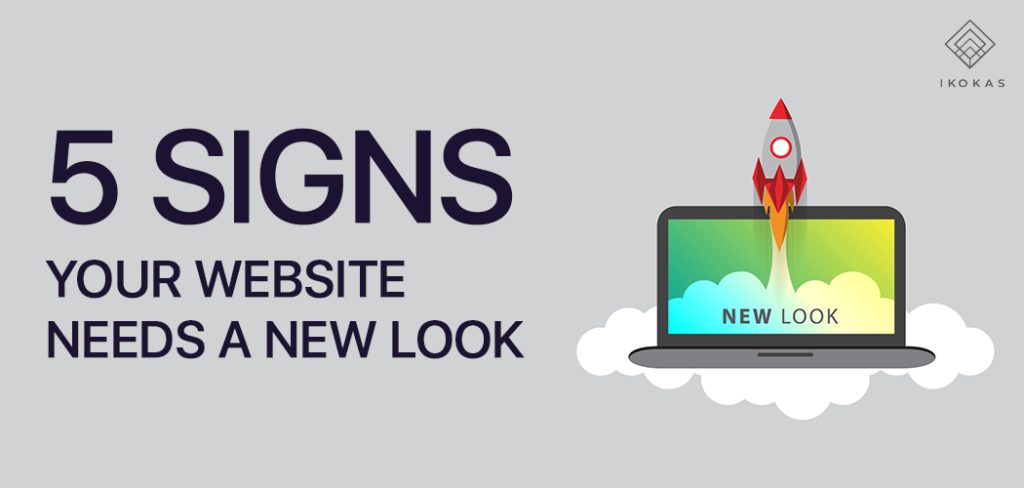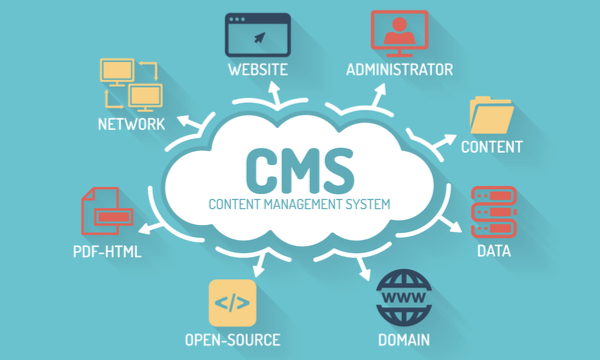10 Signs You Need a Website Redesign
Does your website design suffer from any of the points below? It might be time to revamp your website.

1. Your Website is Not Mobile Friendly
Critical sign you need a website redesign
It is imperative for websites to be mobile-friendly in order to reach and engage with a wider audience. If your website is not optimized for mobile devices, you could be missing out on a significant portion of potential visitors and customers. Mobile-friendly websites offer a better user experience, easier navigation, and faster load times, all of which are crucial for retaining and converting users. Not to mention, search engines like Google prioritize mobile-friendly websites in their rankings, so you could be negatively impacting your site’s visibility and traffic by not catering to mobile users. With the majority of internet browsing now taking place on mobile devices, it’s essential for businesses and individuals to ensure that their websites are fully responsive and functional on all screen sizes. Investing in making your website mobile-friendly is a key step in optimizing your online presence and staying competitive in the digital landscape.

2. Your Website Has a High Bounce Rate
Hi Bounce Rates could mean it is time for a website redesign
If your website has a high bounce rate, it means that visitors are quickly leaving your site without engaging with the content or taking any further actions. This can be a concerning issue as it indicates that there is something on your website that is failing to capture and hold the attention of your audience. In order to address this problem, it may be necessary to revamp your website. This can involve updating the design and layout, improving the user experience, and ensuring that the content is relevant and engaging. By revamping your website, you can make it more visually appealing, easier to navigate, and ultimately more engaging for your visitors. Additionally, by analyzing the reasons behind the high bounce rate, you can identify any specific issues that need to be addressed and make informed decisions about how to improve the overall performance of your website.

3. Your Website is Slow to Load
If you find that your website is slow to load, it may be time to revamp your website. A slow-loading website can be frustrating for users and can lead to high bounce rates, which can ultimately impact your website’s performance and search engine rankings. There are several factors that can contribute to a slow-loading website, including large image files, excessive use of plugins, and outdated code. By revamping your website, you can address these issues and improve its speed and performance. This can involve optimizing images, removing unnecessary plugins, and updating the code to make it more efficient. A fast-loading website not only provides a better user experience but also has a better chance of ranking higher in search engine results. So, if your website is slow to load, it’s worth considering revamping it to ensure that it is running at its optimal speed.
“If you’re a business in Pretoria struggling with slow site performance, our Web Design Pretoria team can help you redesign for speed, mobile friendliness, and better Google rankings.”

4. Your Website Has Broken Links
Consider your user needs
Having broken links on your website can be detrimental to your online reputation and user experience. When users come across broken links, it can give the impression that your website is not well-maintained and up-to-date. This can lead to frustration and a negative perception of your brand. Additionally, broken links can also have a negative impact on your website’s search engine ranking. Search engines like Google prioritize websites with good user experiences, and broken links can signal to search engines that your website is not user-friendly. To prevent these issues, it’s important to regularly check and fix any broken links on your website. Consider revamping your website to ensure all links are working properly and provide a smooth and seamless experience for your users. By proactively addressing broken links, you can improve the overall functionality and credibility of your website.
5. Your Website Doesn’t Match Your Brand
Redesign your website UX
Your website not matching your brand can send mixed signals to your customers and potential clients. Your website is often the first point of contact with your audience, and if it doesn’t accurately reflect your brand, it can create confusion and mistrust. The design, colors, and content on your website should all be aligned with your brand’s identity and message. If your brand is known for being professional and sleek, but your website looks outdated and amateurish, it can damage your reputation and credibility. On the other hand, if your brand is fun and creative, but your website is bland and generic, it can fail to connect with your target audience. It’s crucial to ensure that your website accurately represents your brand in order to maintain a consistent and cohesive image across all platforms. By aligning your website with your brand, you can build trust, establish credibility, and create a positive and memorable experience for your visitors.

6. Your Website Contains Outdated Content
If your website contains outdated content, it’s time to revamp your website. Outdated content can deter potential customers and clients from engaging with your brand, as it can reflect poorly on your credibility and relevance. A website that has not been updated in a long time can give the impression that your business is no longer active or does not prioritize staying current. By revamping your website and updating its content, you can not only improve your online presence but also enhance your brand image. Updating your website with fresh and relevant content can also help with search engine optimization (SEO), making it easier for people to find your website when searching for related topics. Additionally, a revamp can give you the opportunity to redesign the layout, improve user experience, and add new features, ultimately providing a more engaging and valuable experience for your audience.

7. Your Website is Difficult to Navigate
Outdated websites use bad navigation
If you have received feedback that your website is difficult to navigate, it may be time for a website revamp. Having a website that is hard to navigate can drive potential customers away and decrease the effectiveness of your online presence. A complex and cluttered navigation system can make it difficult for users to find the information they need, leading to frustration and ultimately a negative impression of your brand. By revamping your website, you have the opportunity to create a more intuitive and user-friendly experience for your visitors. This can improve the overall user experience and increase the likelihood of converting visitors into customers. A website revamp could involve simplifying the navigation menu, improving the site’s search functionality, and optimizing the layout and design to make it more user-friendly. All of these changes can lead to a website that is easier to navigate and more effective in achieving your business goals.

8. Your Website Features an Outdated Design
Successful websites are up to date
If your website features an outdated design, it may be time for a revamp. An outdated design can give visitors the impression that your business is not keeping up with the times or may even be defunct. A modern and visually appealing website design is essential for capturing the attention of potential customers and keeping them engaged. A website revamp can help to reflect the current trends in design, improve user experience, and showcase your brand in the best possible light. It can also help to optimize your website for mobile devices, which is crucial in today’s digital landscape. By investing in a website revamp, you can ensure that your online presence is strong, professional, and competitive. Updating the design of your website can also boost your credibility and make a positive impression on visitors, ultimately leading to increased traffic and conversions.

9. It’s Difficult to Make Updates
Get a content management system
Making updates to a website can be a difficult and time-consuming task, especially when it comes to a complete website revamp. This is because revamping a website involves making significant changes to the design, layout, and content, which can be a complex and labor-intensive process. Additionally, updating a website requires careful planning and coordination to ensure that the changes are implemented smoothly and without any disruptions to the user experience. It also involves thorough testing and debugging to identify and fix any issues that may arise during the update process. Furthermore, updating a website often requires the expertise of web developers, designers, and content creators, which can make the process even more challenging. Despite these challenges, making updates to a website is essential to keep it relevant, up-to-date, and functioning effectively for its users. Therefore, while it may be difficult, it is important to dedicate time and resources to keeping a website current and well-maintained.

10. Your Website Isn’t Optimized for SEO
SEO gets website traffic
If your website isn’t optimized for SEO, it means that your online presence may not be reaching its full potential. SEO (Search Engine Optimization) is crucial for improving your website’s visibility and driving organic traffic from search engines. If your website is lacking in SEO optimization, it may not be ranking high in search engine results, which means potential customers may not be finding your website. This could greatly impact your business’s growth and success. To address this issue, consider a website revamp that focuses on implementing SEO best practices. This could include optimizing your website’s content, improving site speed, fixing broken links, and ensuring mobile-friendliness. Additionally, performing keyword research and incorporating targeted keywords throughout your website can help improve its search engine rankings. By revamping your website to prioritize SEO, you can enhance your online visibility and attract more organic traffic to your site.

Website Redesign FAQ
This FAQ section addresses common concerns and questions about website redesigns while also being optimized for search engines. It can improve user engagement and provide valuable content that answers queries users may be searching for
How do I know if my website needs a redesign?
If your website is outdated, has slow load times, or is not mobile-friendly, it may be time for a redesign. Other signs include high bounce rates, broken links, and difficulty navigating your site. A website redesign can improve user experience, increase engagement, and help your site rank higher in search engines.
What are the benefits of redesigning my website?
A website redesign can improve site performance, boost SEO, enhance user experience, and make your website mobile-friendly. It can also help align your website with your brand, increase conversions, and reduce bounce rates. A modern, user-friendly website can better engage your audience and provide a competitive edge.
How often should I redesign my website?
Ideally, you should review and update your website every 2-3 years, but the frequency depends on changes in your business, technology, and user behavior. If your website is showing signs of obsolescence or if your business goals have shifted, a redesign might be necessary sooner.
How much does a website redesign cost?
The cost of a website redesign varies depending on factors such as the complexity of the design, the size of the website, and the functionality you require. Simple redesigns may cost a few hundred dollars, while more complex projects could run into the thousands. It’s important to work with a professional to get an accurate estimate based on your needs.
What should I focus on during a website redesign?
When redesigning your website, focus on improving its mobile responsiveness, optimizing load times, simplifying navigation, and ensuring it aligns with your brand. Additionally, prioritize SEO, user engagement, and updating outdated content. A successful redesign should also consider your business goals and enhance the overall user experience.
Can I redesign my website myself, or should I hire a professional?
While DIY website builders and templates may be an option for basic redesigns, hiring a professional web designer or agency ensures that your site is optimized for performance, SEO, and user experience. Professionals can provide expert insights, a custom design, and ongoing support to ensure your website meets your goals.
Will a website redesign improve my SEO?
Yes, a website redesign can improve your SEO if it includes updates like optimizing site speed, making the site mobile-friendly, fixing broken links, and ensuring proper use of keywords and metadata. A well-optimized redesign will help search engines better understand your site and improve your rankings.
How long does a website redesign take?
The timeline for a website redesign depends on the scope of the project. A simple redesign can take a few weeks, while larger, more complex redesigns may take several months. Make sure to plan accordingly, allocate enough time for testing, and allow for feedback and revisions during the process.
What is the difference between a website redesign and a website update?
A website redesign involves significant changes to the look, structure, and functionality of your site. It often includes a complete overhaul. In contrast, a website update involves smaller changes, such as refreshing content, updating images, or tweaking the design, without altering the entire structure.
How can I measure the success of my website redesign?
Success can be measured through various metrics such as increased traffic, lower bounce rates, improved SEO rankings, higher conversion rates, and greater user engagement. Tools like Google Analytics can help track performance before and after the redesign to assess its impact.
Redesign your website with us
Get a quote from us and update your new website or outdated website.
Our team is experienced at assessing aspects of your website and providing a tailormade solution to maximize your website structure, website SEO,
Enjoy more traffic a better user experience and better conversions with an updated website









![The Impact of Having a Business Website: A Survey Conducted by New Perspective Design in South Africa [Case Study 2025]](https://www.newperspectivestudio.co.za/wp-content/uploads/2025/02/The-Impact-of-Having-a-Business-Website-survey.jpg)





